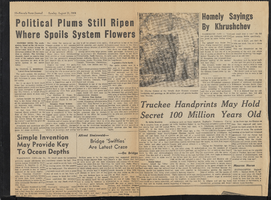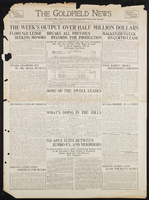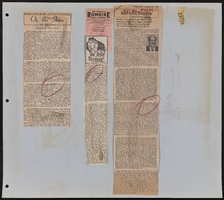Search the Special Collections and Archives Portal
Search Results
Adele Baratz Papers
Identifier
Abstract
The Adele Baratz papers mainly consist of photographs documenting Adele Baratz's life in Las Vegas, Nevada from the 1930s to 2010. An essay and list of names written by Baratz's brother, Charles Salton, document the early history of the Jewish community in Las Vegas.
Archival Collection
Leon Rockwell Photograph Collection
Identifier
Abstract
The Leon Rockwell Photograph Collection (approximately 1850-1979) contains black-and-white photographic prints, negatives, and slides, as well as postcards and tintypes. The images portray the lives of the Rockwell family in southern Nevada, their travels throughout New York and the western United States, and their immediate and extended family members. Also included are images of the volunteer and early firefighters of Las Vegas, Nevada, the Rockwell's family cabin at Mount Charleston, Nevada, and the Rockwell family home in Las Vegas. Portions of the images are from the Rockwell family travels across Nevada, Utah, New Mexico, Arizona, and California and depict historic locations such as Cove Fort, Utah; Rhyolite, Nevada; and Pueblo Grande de Nevada.
Archival Collection

Transcript of interview with George Gilbert by Ruth Guidi, February 10, 1975
Date
Archival Collection
Description
On February 10, 1975, Ruth Guidi interviewed George Gilbert (born 1931 in Southgate, California) about his life in Nevada. George first talks about his education in Las Vegas and his family background. He also talks about times during World War II, the shopping facilities available to those in Las Vegas, the casinos that existed, the churches that were built, and the Helldorado parades. The two also discuss social clubs, politics, the atomic testing, environmental and social changes, the Mormon Fort, Hoover Dam, and the first movie theaters.
Text

Transcript of interview with Edna Jackson-Ferguson, April 15, 1975
Date
Archival Collection
Description
On April 15, 1975, Edna Jackson-Ferguson (born 1897 in Overbrook, Kansas) provided a narrative-style oral history about her and her husband Jack’s experiences during the building of the Hoover Dam. Jackson-Ferguson provides many details about the way of life living in the camp with workers of the dam, the tasks required of those workers in building the dam, and some of the actual processes of pouring the concrete for the structure. She also talks about food, transportation, weather, and entertainment during the time. To conclude the interview, Jackson-Ferguson mentions some of the other job positions her husband held and their pride in being a part of the Hoover Dam’s construction.
Text






